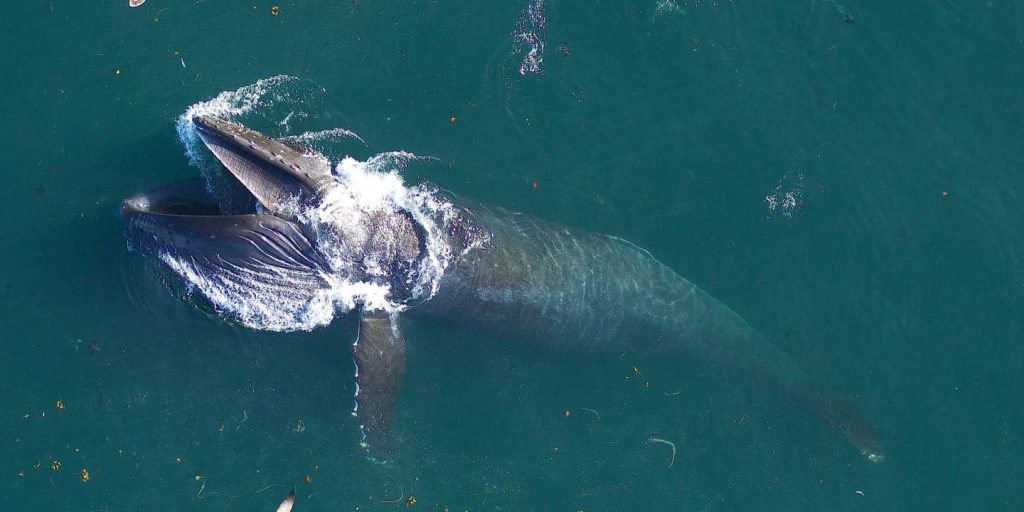
The great appetite of whales, a source of strength for the oceans

“Impressive”, “Exceptional”, “Major”: Characteristics of rain in a marine biologist to qualify a study on whale nutrition published Wednesday (November 3rd) in the journal. temper nature. After 11 years of research, development, measurements and calculations, an international team has just done a drastic review of the extent to which prey is consumed by these cetaceans, the largest animals on our planet. Based on several recent technologies, the team led by Jeremy Goldbogen of Stanford University in California concluded that seven major baleen whales suck up three times more zooplankton than previously thought. A startling result that could have serious consequences in terms of ocean diversity and productivity if the return of cetaceans, which began 40 years ago, increases.
As is often the case in science, it all started with a related question. “I wanted to know how many pollutants, microplastics, or fibers a whale could ingest, says Matthew Savoca, a Stanford researcher and lead author of the article. So I needed to know how much she was eating. To my surprise, I found that there was no measure of whale prey consumption. “
These cetaceans actually present three major faults to the natural world. Its size and lifestyle make it impossible to notice in captivity. In nature, deep night waters make it impossible to follow their eating habits directly. In addition, if counting the number of antelopes bitten by a lion is difficult, quantifying the microscopic prey filtered by a whalebone presents a challenge. So far, researchers have relied on two alternative methods. Some have tried to assess the metabolic needs of the animal “Often by extrapolating small animals like dolphins, and ignoring the multiple biological differences between species”Matthew Savoca explains. Others analyzed the contents of the stomachs of the bodies. “But this only gives you one picture at a time and often leaves an entire part of the intestinal tract,” Researcher continues.
Camera, microphone, accelerometer, GPS, drone
This time around, the team has benefited from several technological advancements. It equipped 321 individuals, of seven different species, from fin whales to blue whales, and the latest equipment: camera, microphone, GPS and accelerometer. In three oceans (the Pacific, the Atlantic, and the South), scientists have been able to follow in detail the behavior of cetaceans, which vary greatly depending on the species, and in particular, determine the number and duration of their meals. The researchers then used drones to fix images of 105 of these samples, determine their length and mass, and thus assess the volume of the filtered water. Finally, they outfitted small boats with sonar devices to measure the density of krill, copepods or other zooplankton found in fishing grounds in the Gargantua seas.
You have 56.78% of this article to read. The rest is for subscribers only.

“Incurable web evangelist. Hipster-friendly gamer. Award-winning entrepreneur. Falls down a lot.”
